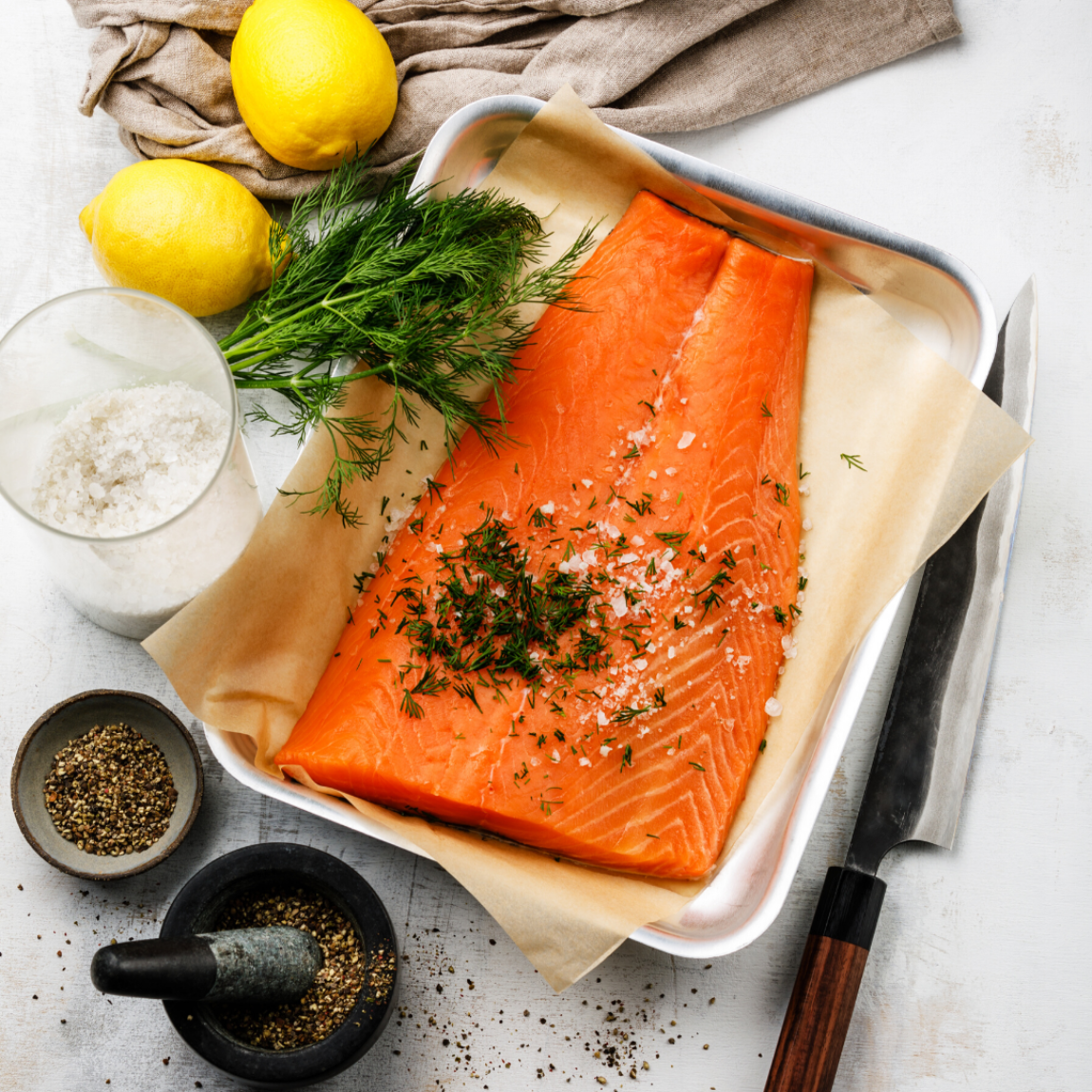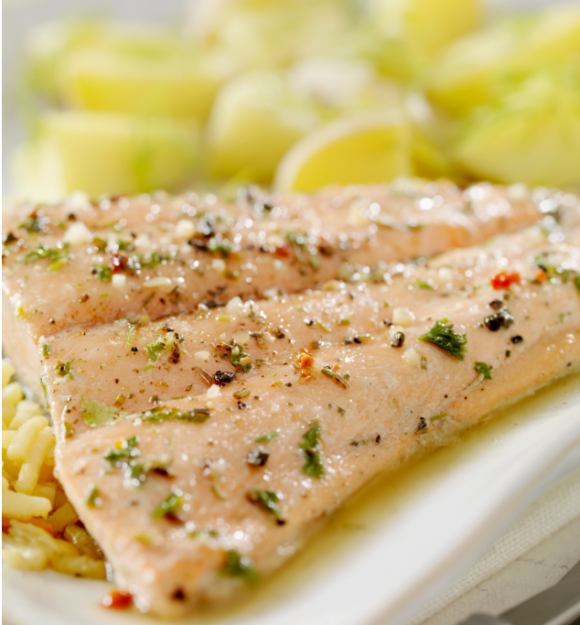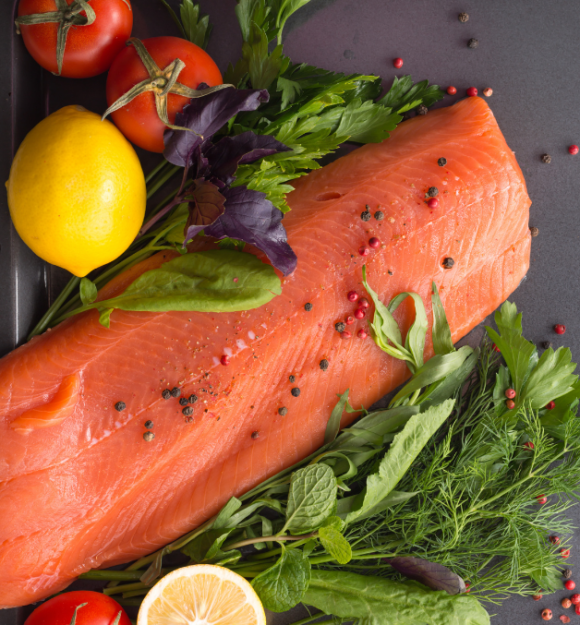Most supermarkets are loaded with scores of seafood options. Many of which are imported from producers around the world. Dive deeper, and you’ll notice among each seafood option –– from salmon to shrimp –– there are numerous types and brands to choose from.
That begs the question: When you’re standing in the seafood aisle of your local supermarket (or browsing available items online through a food delivery app), how can you be certain you’re making the right choice for you and your family? Are you purchasing the freshest, most nutritious option your market offers? Should you be purchasing a sustainable option? Wild versus farmed? Making the right choice is tough!
So next time you’re shopping for salmon, consider the below. (And if you’re looking for BluGlacier salmon, ask about us at your local supermarket or order Oshen Salmon to be delivered straight to your door)
Salmon 101: How To Choose The Most Nutritious Salmon
- Pay attention to color.
In the world of salmon, the redder or pinker doesn’t necessarily mean the salmon is more or less nutritious than other options. Oftentimes, the enriched color is infused into the salmon. This results in a bolder hue once it reaches you at the market. However, steer clear of browning on a fillet of salmon.
- Ask your seafood specialist about sustainable salmon options.
Try to choose salmon that has been raised in a sustainable way. At BluGlacier, for example, we continue to be a frontrunner in sustainable practices that are ethical for aquaculture. We pride ourselves in being stewards of our lands and waterways. Recognizing our responsibility to lead our industry toward a cleaner environment for all. With every dollar spent toward filling your fridge with salmon, you’re directly supporting the company that produced the fish.
- If you can, give it a poke.
We know this one may be almost impossible but hear us out. A revealing sign of fresh salmon is whether or not it “bounces back” after a simple poke. If your finger leaves an imprint on the salmon fillet, you may want to pick a different type or cut.
How Healthy Is Salmon?
Salmon is typically considered one of the healthiest proteins to eat. Rich in healthy omega-3s, sustainably raised salmon appears in virtually every restaurant and supermarket across the country. It’s no wonder considering salmon is as delicious as it is nutritious.
“A 3.5-ounce (100-gram) portion of farmed salmon has 2.3 grams of long-chain omega-3 fatty acids,” according to wellness website, Healthline. “Unlike most other fats, omega-3 fats are considered “essential,” meaning you must get them from your diet since your body can’t create them.”
In fact, the American Heart Association recommends eating at least two 3.5-ounce servings of fatty fish, such as salmon, every week. Think of fresh, high-grade salmon as not just a superfood, but also an amazing ingredient that’s extremely versatile in the kitchen.
“Salmon is packed with omega-3 fatty acids and vitamin B12, in addition to selenium and choline,” according to South Florida chef David Shiraldo, who runs the kitchen at The Restaurant at The Norton in West Palm Beach, Florida. “All of these are linked to improving brain function, cognition, and neurological health. In addition, the polyunsaturated fatty acids found in salmon can help improve serum cholesterol, which can reduce your risk of cardiovascular disease as well.”
Wild vs. Farmed Salmon
So, next time you’re roaming the supermarket, should you look for wild or farmed salmon?
While there’s no “wrong” type of salmon to buy and consume (all salmon is delicious and nutritious), some fillets are better than others. Sustainably raised farmed salmon like BluGlacier have a perfect combination of healthy omega-3s (DHA & EPA). Not only that, farmed salmon is known to be higher in vitamin C and omega-3 fatty acids.
Beyond what’s on your plate, it’s important to shop products you believe in. Sustainability practices are crucial, and it’s important to research each company – from food to beauty – to make sure the products you’re using (and eating) are in line with your beliefs.
Remember: Sustainability improves the world around us, helping to protect natural resources for future generations. Going green isn’t just a fancy marketing term. It’s a real concept with real results and benefits. Companies like BluGlacier that are committed to sustainability aren’t just concerned with producing incredible products. They’re also committed to making the world a better, safer, and healthier place.
Next time you’re at the grocery store, standing in the salmon aisle, and wondering what fatty fish to choose, go for the sustainable option. Choose the product that will ensure our ecosystem stays healthy and strong for your kids, their kids, and beyond.



